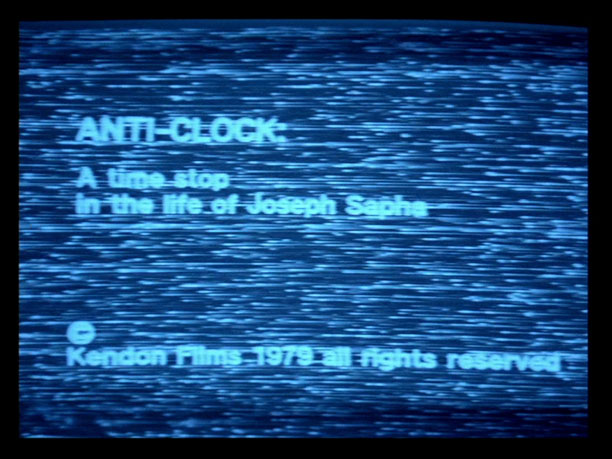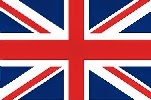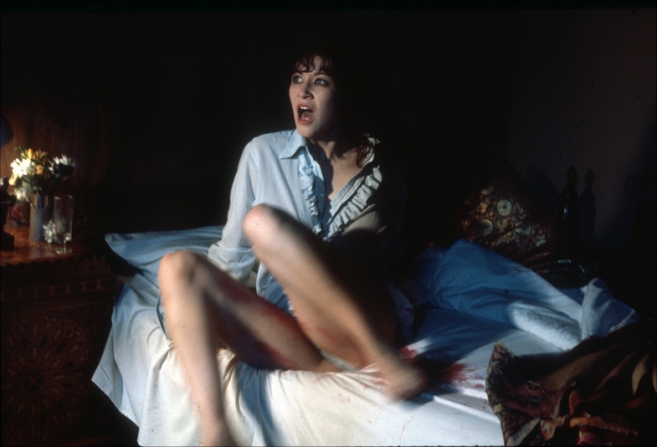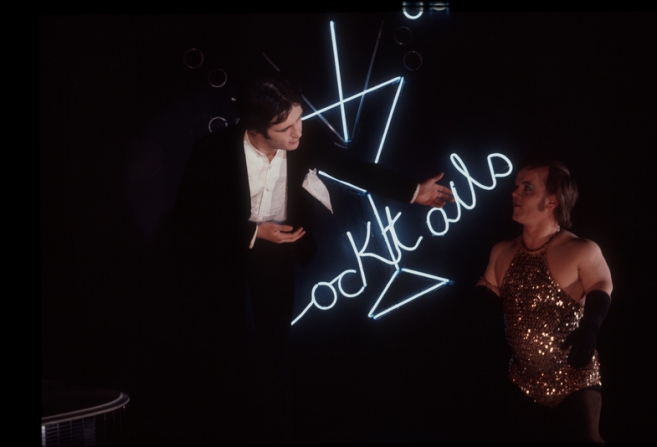 |
| From https://mattystanfield.files.wordpress.com /2015/12/anticlockheader.jpg?w=922 |
Directors: Jane Arden and Jack
Bond
Screenplay: Jane Arden
Cast: Sebastian Saville (as Joseph
Sapha / Professor J.D. Zanof); Suzan Cameron (as Alanda Clark, Sapha's Mother);
Liz Saville (as Sapha's Sister); Louise Temple (as Madame Luisa Aranovitch)
 Synopsis: Joseph Sapha (Saville)
is a gambler, stage psychic for nightclubs and a former criminal who can see
ahead in time but cannot access his own memories. He becomes part of an
experiment led by Dr. Zanof (also played by Saville)
to correct this, this avant-garde sci-fi work delving into Sapha's and others
minds.
Synopsis: Joseph Sapha (Saville)
is a gambler, stage psychic for nightclubs and a former criminal who can see
ahead in time but cannot access his own memories. He becomes part of an
experiment led by Dr. Zanof (also played by Saville)
to correct this, this avant-garde sci-fi work delving into Sapha's and others
minds. Anti-Clock is a film that requires one viewing to see it for the first time, a second to even begin linking the dots together to understand it. Unfortunately this type of film is doomed to accusations of pretention when viewers demand the first viewing to be the most rewarding, something I once fell afoul of when I first saw it years ago. Unfortunately the nature of mainstream cinema viewing is that it requires the first viewing to be sufficient when in reality some of the most rewarding films for me, even cult movies, have required more than one viewing for them to have weight to them. This type of film goes against A-to-B plot structures as well, another taboo if it is broken when it's deemed law to keep a film in a simplistic and repetitive plot structure even for drama. Something like Anti-Clock now appeals for me because it forces me out of my comfort zone, and what's surprising is that while the structure challenges me the plot is crystal clear and predates the type of genre cinema of the eighties - a man able to exist out of time, in the realm of the "anti-clock" of the title, but with a troubled past made worse by the fact his gift may be responsible for him being unable to access his memories alongside the existing repression.
 |
| From https://i.vimeocdn.com/video/408237306_1280x940.jpg |
You'll need multiple viewings to
get a greater context of what takes place in Anti-Clock, particularly for its technical dialogue that reflects
the type of science and paranormal obsessions of the era the film has. However
when this hurdle is past, it can be argued that Anti-Clock is the encapsulation of a post-punk sci-fi film at its
most coolest. In tone it's like a later, experimental Jean-Luc Godard work especially when he started using video. Beginning with a
television being filmed, the footage on it a tapestry of archival footage of
politics and war, the film is as much a sound and audio collage that reflects
the environment which its central story is part of, making it a sci-fi work
that taps into the mood of the era. Memories interchange by way of two television
screens continually being placed together on screen multiple times like a split
screen in someone's mind. Characters are depicted both in front of the camera
and on television, predating the material Videodrome
(1983) would depict of people being altered by television media, and while
this is an experimental film which firmly stays in realism baring its premise,
the same notion of the TV being the mind's eye is prevalent here. For Sapha,
his life can be depicted in a monochrome haze of a reverse negative image, be
in colour, be mocked reconstructions or halted
on a fly or be repeated. In Zanof's conference/experiment, the world is a blue
lit hued and claustrophobic space where the most intimate thoughts are on full
display.
 |
| From http://www.bfi.org.uk/films-tv-people/sites/bfi.org.uk.films-tv-people/ files/styles/gallery_full/public/bfi_stills/bfi-00o-1dw.jpg?itok=oytWZ3iU |
In-between this structure scenes
stick out which eventually start to connect and paint a portrait of its lead
character in more detail: a poker game where Sasha sees the fate of an older
player who is losing the game; a comedy performance between him and a woman
which ends up biting at gender roles and sexism through slapstick facial
mannerism; a flashback near the end of the film at his father's funeral with a
bitterness towards his mother; and much more. Anti-Clock does build up a compelling dramatic story alongside its
political digressions where Zanof's monologues about perspective of others is
voiced in front of clips of baboons or images of nuclear testing explosions,
monologues which end up connecting to the personal story in terms of the themes
behind Sasha's narrative. The political discussion now have the vibe of
depicting a time point at the cusp of the eighties, where the problems of the
seventies in Britain such as economic downturn meet what would happen in the
eighties as Cold War paranoia would grow again. The post-punk vibe mentioned
can be felt in terms of a "coolness" to the tone, still very serious
but with an aesthetic richness which feels distant and would be digested into
more commercial films in terms of colour, the use of video and the themes.
Technical Detail:
The combination of various forms
of media meant that Anti-Clock took
considerable time of editing into its final form, only subsequently changed
with an alternative cut in 2005 from Jack
Bond that makes the narrative more straightforward. The structure of
archive footage, staged scenes and caught footage of reality (especially of the
city streets and interiors of the time) meld together with real aplomb, give
meaning through the continuous narrative. The music as well, some composed and
sung by Jane Arden, adds to this but
also at times evokes the Howard Shore
score for David Cronenberg's Crash (1996) with the metallic guitar chords.
 |
| From http://www.bfi.org.uk/films-tv-people/sites/bfi.org.uk.films-tv -people/files/styles/gallery_full/public/bfi_stills/bfi-00o-1dv.jpg?itok=nu2HCMgC |
Abstract Rating (High/Medium/Low/None): High
While the plot is straight
forward the structure of Anti-Clock
is amongst the most distinct you could get in terms of depicting memory and
thought. Rather than a A-to-B plot, it develops layers like an onion, building
depth through stripping the layers around it's protagonist as its own self
develops them, revealing the tragic truth of his reality which is confounded by
a trauma and possible repressed sexuality depicted in a female figure of his
life masturbating in front of him in a bedroom in a dream memory. (That the actress
plays two quite different character emphasises this subtext). Instead of
letting the plot dictate the course, the scenes carefully put together means
that as they connect a plot is built from their juxtapositions that can be free
of the restrictions of conventional plot structure. A factor to abstract
cinema, even genre movies, is the notion of layers and spectrums of emotion and
reality, and as much as the scenes of an multi-ethnic group of scientists
talking in scientific monologues can be off-putting to the uninitiated of
avant-garde filmmaking with the complicated dialogue, the structure of Anti-Clock is not that far off genre
films in presenting its themes by way of tropes one can find in sci-fi and
crime stories. The difference is that its willing to push its formal structure
to an extreme to emphasise these tropes in its own different way.
Abstract Spectrum: Avant-Garde/Expressionist/Mind Bender
Abstract Tropes: Unconventional Narrative Structure; Memory Lapse;
Incest; Precognition and Psychic Ability; Feminist Critique of Gender;
Scientist Monologues; Post-Punk Aesthetic; Use of Multi-Media and Video
Personal Opinion:
A deeply underappreciated work,
especially as it was barely seen up to 2009 in its home country of origin. It's
also forms a triptych of three films made by Jane Arden and Jack Bond that
spans the sixties to a fair prediction of eighties aesthetic - Separation (1968) and The Other Side of Underneath (1972),
not to mention a short called Vibration
(1974) - which would all be likely candidates for the Abstract List.

No comments:
Post a Comment